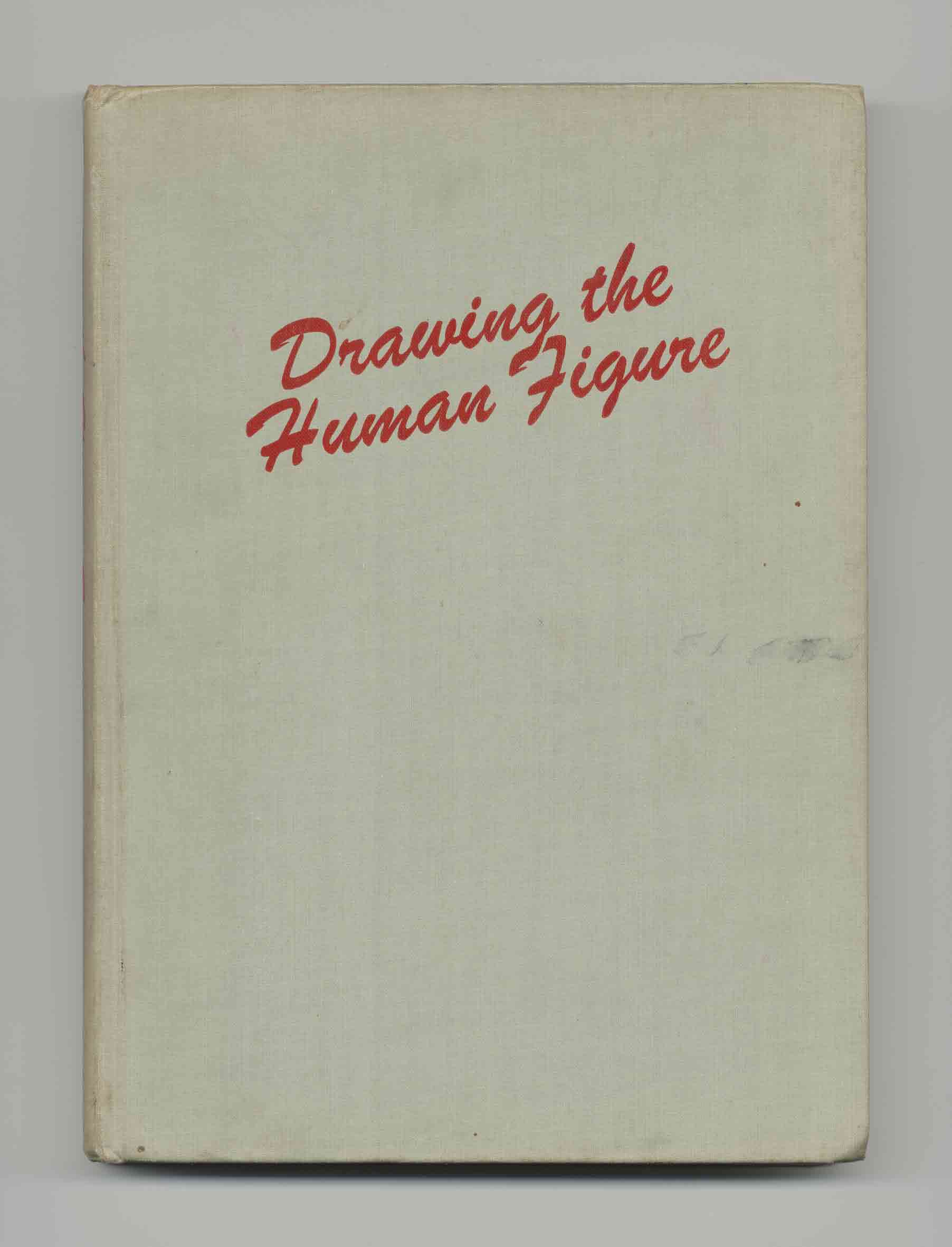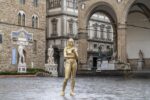Diango Hernández – Drawing the Human Figure

Il progetto Cretto, che giunge con Diango Hernández alla sua seconda mostra, è stato concepito concettualmente a partire da per il luogo in cui viene presentato: la Fondazione Brodbeck a Catania, in Sicilia.
Comunicato stampa
Drawing the Human Figure
Diango Hernández
progetto di residenze Cretto, a cura di Nuno Faria
Fondazione Brodbeck, Catania
INAUGURAZIONE: DOMENICA 25 MARZO 2012, h. 11
Il cranio, struttura ossea dura e rigida, è la forma che rende tutte le teste relativamente uguali. Chiaramente esistono varie forme di cranio: ci sono uomini con una scatola cranica lunga e uomini con un cranio largo e, inoltre, il cranio varia nella forma in base alla sua provenienza geografica. Ma, nella sua essenza, il cranio può essere ridotto, genericamente, alla forma piatta di un ovale e, nel suo volume, alla forma di un uovo. Questa generalizzazione, variabile all'estremo, è ancora la più usata nel disegnare la prima caratteristica strutturale di una testa. Questo è ciò che Arthur Zaidenberg ha scritto nel capitolo “The Head”, nel suo libro intitolato “Drawing the Human Figure”.
“Come stai oggi? Spero bene, io sono il Dr. Christopher Harrison di Harlesden, Nord Ovest di Londra, qui in Inghilterra. Lavoro per la Credit Suisse Bank di Londra. Ti scrivo dal mio ufficio, cosa che sarà di immenso beneficio per entrambi. Nel mio dipartimento, ricoprendo io la carica di assistant manager (nella regione della Greater London), ho scoperto una somma abbandonata pari a 16.5 milioni di pound (sedici milioni e cinquecento mila sterline) in un conto che appartiene ad uno dei nostri clienti stranieri, il defunto Mr. Moses Saba, un ebreo messicano, vittima di un incidente in elicottero, avvenuto all’inizio di quest’anno, che ha ucciso lui e i membri della sua famiglia. Saba aveva 46 anni. Al momento dell’incidente, nell’elicottero si trovavano anche sua moglie, suo figlio Avraham (Albert) e sua nuora. Anche il pilota è deceduto.”
Questo è l’inizio di una lettera che il Dr. Christopher Harrison scrisse non solo a me, ma probabilmente anche a te/voi.
Anni fa avrei pensato che la vita è piena di buffe sorprese. Per esempio, se avessi ricevuto la stessa lettera dal Dr. Christopher Harrison di Harlesdem vent’anni fa, avrei subito creduto che fosse vera e, senza alcun dubbio, gli avrei risposto con una lettera gentile e piena di entusiasmo. Oggi, la mia e la vostra posta elettronica sono intasate da false sorprese e da terribili notizie infondate che arrivano direttamente tra gli spam; sì, arrivano in questi piccoli contenitori pieni di infiniti premi della lotteria che devono essere subito ritirati, transazioni milionarie o del fantastico sesso gratuito; un posto straordinario pieno di allettanti promesse per una vita migliore. Tutto ciò che dobbiamo fare sta in un CLICK, più semplice di così, e con un movimento elementare del tuo dito indice tutto ciò si avvererà, probabilmente riuscirai addirittura ad incontrare il Dr. Christopher Harrison, il quale ti aspetterà alla Victoria Station con una gigantesca borsa di pelle piena di 16.5 milioni di pound.
A partire dagli spam che ricevo, ho creato 'Drawing the Human Figure', una mostra che unisce sotto lo stesso tetto – Speranza, Spreco e Linee. Forse, l'equazione che segue rappresenta il modo più ragionevole per parlare di questa mostra: S+ L/S = Ca-p*
* S= SPERANZA L= LINEE S=SPRECO Ca-p= Credi ancora - per favore
Il progetto Cretto, che giunge con Diango Hernández alla sua seconda mostra, è stato concepito concettualmente a partire da per il luogo in cui viene presentato: la Fondazione Brodbeck a Catania, in Sicilia.
Il progetto ha avuto un lungo tempo di maturazione che ha incluso viaggi di preparazione, varie sessioni di lavoro con i responsabili artistici della Fondazione e ore di discussione con gli artisti che saranno presentati durante i prossimi tre anni. L’obiettivo iniziale al quale abbiamo tenuto fede, era quello di proporre un progetto che in qualche modo fosse complementare al progetto Fortino1 curato da Helmut Friedel e Giovanni Iovane e che presentasse artisti provenienti dal sud Europa o dall’America Latina (Portogallo, Cuba, Brasile) i cui interventi devono essere preceduti da un periodo di residenza a Catania.
Se il titolo del progetto evoca inevitabilmente lo spirito e l’energia mitologica del luogo ricordando un doppio momento/monumento contemporaneo, fondatore del concetto di memoria quale incaricata a preservare e trasmettere l’energia nel tempo, esso si riferisce, allo stesso tempo, al significato letterale della parola: crepa, intervallo, taglio.
Bio
Diango Hernández è un artista visivo, nato nel 1970 a Sancti Spíritus, Cuba. Ha conseguito la laurea in Industrial Design presso l'Havana Superior Institute of Design (ISDI, 1994). Successivamente, inizia un’esperienza di collaborazione con il nome ‘Ordo Amoris Cabinet’, dal termine latino che sta per ‘ordine’ e ‘amore’ (1994-2003). Attualmente Hernández vive e lavora a Düsseldorf, Germania.
Esposti in tutto il mondo, i lavori di Hernández sono stati inclusi alla 51esima Biennale di Venezia (Arsenale, 2005), alla Biennale di Sao Paolo (2006), alla Biennale di Sydney (2006), alla Kunsthalle di Basel (2006), alla Haus der Kunst di Monaco (2010), alla Hayward Gallery di Londra (2010) e, più recentemente, con una retrospettiva, al Mart di Rovereto (2011).
Nuno Faria, 1971
Curatore indipendente. Vive e lavora tra Lisbona e Loulé, Algarve, Portogallo.
Curatore di MOBILEHOME, scuola d'arte nomade, sperimentale e indipendente a Loulé. Professore del corso di Arti Visive all'Università dell'Algarve e al Master in fotografia all'Istituto Politecnico di Tomar. Direttore artistico dell'International Center for the Arts José de Guimarães che aprirà prossimamente, Guimarães, capitale europea della cultura 2012.
Drawing the Human Figure
Diango Hernández
residencies project Cretto, curated by Nuno Faria
Fondazione Brodbeck, Catania
OPENING: SUNDAY 25th MARCH 2012, 11 a.m.
The skull, a hard, bone structure, is the shape-giving form which makes all heads relatively the same. Of course, there are variations in the shapes of skulls. There are long-headed men and wide-headed men and skulls vary in shape in different geographic locales. But in essence, the skull can be reduced to the general flat shape of an oval and in volume, an egg-shaped form. This generalization, variable in the extreme, is still a most usable one in drawing the first structural characteristic of a head. This is what Arthur Zaidenberg wrote in the chapter “The Head” in his book “Drawing the Human Figure”.
“How are you today? I hope fine, I am Dr. Christopher Harrison from Harlesden, North West London, here in England. I work for Credit Suisse Bank London. I am writing you from my office which will be of a great immense benefit for both of us. In my department, being the assistant manager (Greater London region), I discovered an abandoned sum of $16.5 Million Pound (Sixteen Million Five hundred Thousand Pound sterling) in an account that belongs to one of our foreign customers Late Mr. Moses Saba, a Jew from Mexico that was a victim of a helicopter crash early this year, killing him and family members. Saba was 46-years-old. Also in the chopper at the time of the crash was his wife, their son Avraham (Albert) and his daughter-in-law. The pilot was also dead.” This is the beginning of what Dr. Christopher Harrison wrote not only to me but probably also to you...
Years ago I used to think that life was full of surprisingly funny surprises. For example if I would have gotten the same letter from Dr. Christopher Harrison from Harlesden 20 years ago I would have immediately believed in it and without a single doubt I would have answered him with a very polite and enthusiastic letter. Today mine / ours mail boxes are jammed with fake surprises and with terrific false news and they all go directly to the junk, yes into this little container full of huge lotteries rewards to be immediately collected, millionaire transactions to receive and free wonderful sex, this is an astonishing place stuffed with tenting promises of a better life. All we have to do is to CLICK, as simple as that, with a very elemental move of your index finger you'll get there, probably you would even meet Dr. Christopher Harrison whom would be waiting for you at the Victorian station with a huge leather suitcase fill with $16.5 Million Pound.
Out of my junk mailbox I have created 'Drawing the Human Figure' an exhibition that most of all connects under a same roof - Hope, Waste and Lines. The most reasonable way to talk about this exhibition is maybe with the following equation: H+ L/W = Ba-p*
* H= HOPE L= LINES W= WASTE Ba-p= Believe again – please
The Cretto project, which has with Diango Hernández exhibition its second moment, was built conceptually from and at the place where it is shown: the Fondazione Brodbeck, in Catania, Sicily.
It had a long period of development, including preparatory trips, several working sessions with the artistic direction of the Foundation and hours of discussion with the artists that will be presented over the next three years.
The initial aim, to which we kept faithful, was to propose a project that would somehow complement the project Fortino1, curated by Helmut Friedel and Giovanni Iovane, featuring artists from Southern Europe or Latin America (Portugal, Brazil, Cuba), whose interventions are preceded by a period of residence in Catania.
If the title of the project inevitably evokes the spirit and mythological energy of the place, recalling a moment/contemporary monument duality, the basis of the concept of memory as a function entrusted to preserve and transmit energy in time, it also refers to the literal meaning of the word: crack, interval, cut.
Bio
Diango Hernández is a visual artist born in 1970 in Sancti Spíritus, Cuba. He earned a degree in Industrial Design at the Havana Superior Institute of Design (ISDI, 1994). After graduation he began a collaboration experience under the name ‘Ordo Amoris Cabinet’, after the Latin words for ‘order’ and ‘love’ (1994-2003). Hernández currently lives and works in Dusseldorf, Germany.
Exhibiting widely Hernández’s works has been included at the 51st Venice Art Biennale (Arsenale, 2005), Sao Paolo Biennial (2006), Biennale of Sydney (2006), Kunsthalle Basel (2006), Munich’s Haus der Kunst (2010), London’s Hayward Gallery (2010) and more recently with a survey at the MART (2011) in Rovereto, Italy.
Nuno Faria, 1971
Independent curator. Lives and works between Lisbon and Loulé, Algarve, Portugal. Curator of MOBILEHOME, nomadic, experimental and independent art school, Loulé. Professor at the Visual Arts course at University of Algarve and the Masters in Photography at Instituto Politécnico de Tomar. Artistic director of the forthcoming International Center for the Arts José de Guimarães, European Capital of Culture 2012, Guimarães.



